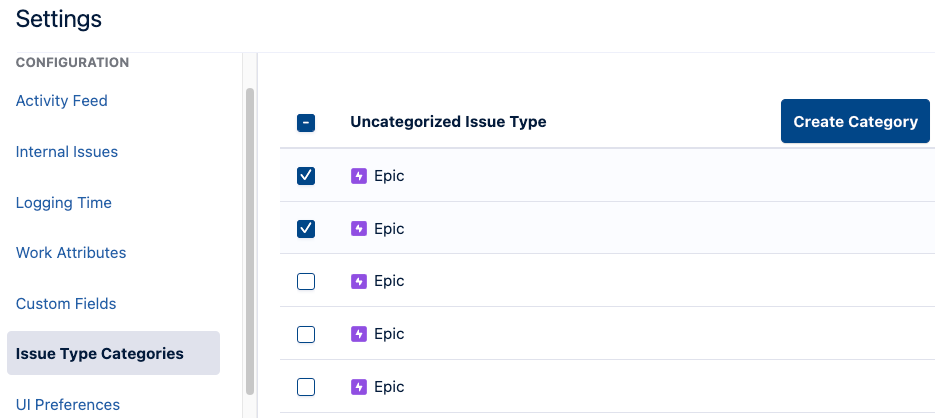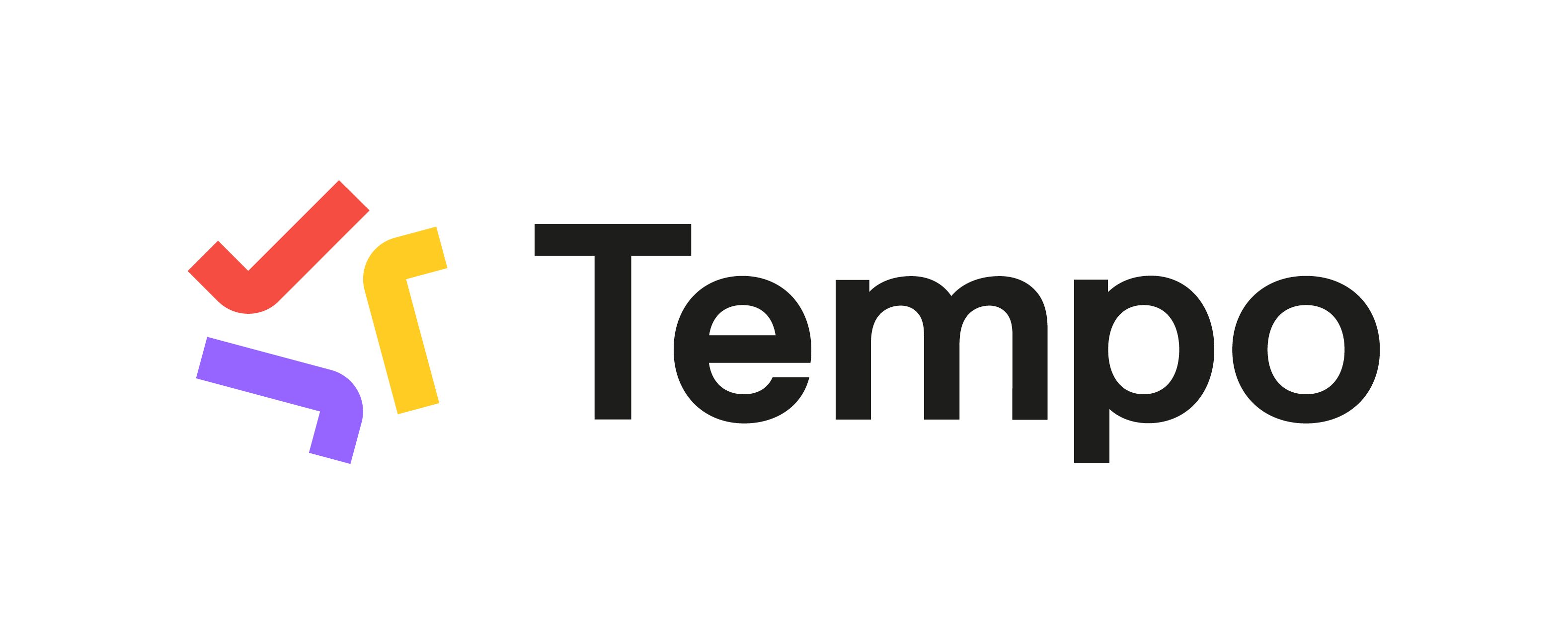You can create unique issue types in each Jira project. For example, a project could have a Customer Bug, while another project has specific categories for bug types, such as iOS Bug, Android Bug, or Safari Bug. These disparate issue types can make Tempo reports hard to understand since there are so many different bug types between Jira projects.
Using Tempo Settings, you can create categories for similar or duplicate issue types. The categories can then be used in Tempo reports to group issues more efficiently.
Create an Issue Type Category
All issue types from your Jira projects are listed. If you use the same issue types in multiple Jira projects, duplicate entries are listed.
-
Navigate to Tempo Settings.
-
Under Configuration, select Issue Type Categories.

-
Select at least one uncategorized issue type. You can add more issue types to your category later.
-
Click Create Category.
The Issue Type Category is created with any selected issue type added to it. We highly recommend renaming the Issue Type Category by clicking the name field.

Add Issue Types to Categories
-
In the Issue Type Categories, select an uncategorized issue type.
-
Expand the Add to Category menu, and then select the category you want to add the issue type to.

Remove Issue Types from Categories
You can remove issue types from categories to add them to a different category or to keep them uncategorized. Uncategorized issue types are included when you group by Issue Type Category.
-
Use the Remove Issue Types button to remove issue types from categories.
-
If you want to remove the entire category, use the Remove Category button for the entire category. Issue types associated with the category are returned to the Uncategorized state.

